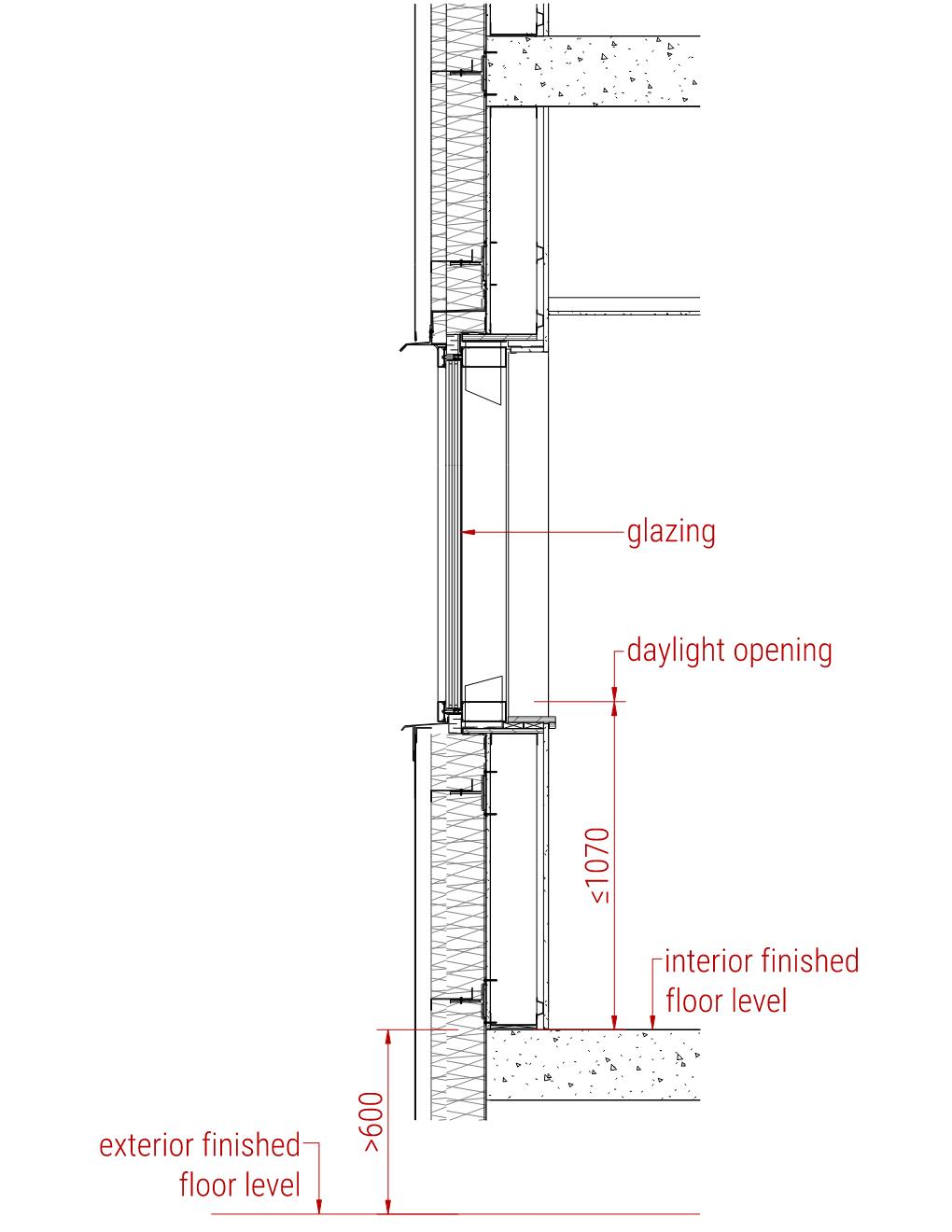THGC - Insulated glass units + guard loads
User guide
The application "THGC - Insulated glass units + guard loads" allows for preliminary compliance validations of double sealed units subjected to guard loads, under three possible wind loads.
Since point loads generate relatively high localized stresses and since annealed glass is 4 times less resistant than tempered glass, the application does not allow for annealed glass to be considered in the presence of guardrail loads. As a reference, a 1000mm x 1000mm sealed unit composed of two 6mm annealed glass panes would result in a 260% utilization of the resistance on the inner glass pane and 195% utilization on the outer glass pane. For a 500mm x 1000mm sealed unit, the inner glass pane would be at 212% with the same composition (2 x 6mm annealed). With 2x3mm annealed, we are at 272% utilization. With 2x4mm annealed, we are at 202% utilization. With 2x5mm annealed, we would be at 151% utilization. With 2x6mm annealed, we would be at 107% utilization, still for a 500x1000mm thermos. As a consequence, no other choice than tempered glass is presented in the application.
If your composition features laminated glass, you can use the following equivalent thicknesses to enter the correct monolithic glass thickness:
The information in the Project Name and Glazing Tag boxes is used to better identify and classify the verification reports when several glazing are studied in several projects and multiple reports are generated.
Shorter side: identify the dimension of the shorter side of the rectangular shape
Longer side: identify the dimension of the longer side of the rectangular shape
The shorter and the longer side can be of identical dimensions
Wind pressure: choose between the three proposed wind pressures
The wind load will have to be validated by the client according to the project data (locality, type of terrain, building height, etc.)
Interior glass thickness: choose the thickness of the interior glass pane to be studied among the different thicknesses of tempered glass in the drop-down menu
Stress utilisation % (interior glass): the percentage of stress utilization for the inner glass pane appears in this box. The aim is to obtain a percentage lower than 100%, as 100% is the maximum capacity of the glass. Note that a value of >100% indicates that the maximum capacity is exceeded, it is therefore necessary to choose a thicker glass pane
Conformity (interior glass): the box indicates whether or not the interior glass complies with the guardrail loads. As mentioned above, a percentage greater than 100% indicates that the glass is "non-compliant". It is therefore necessary to choose a thicker glass pane.
Exterior glass thickness: choose the thickness of the exterior glass pane to be studied among the different thicknesses of tempered glass in the drop-down menu
Stress utilisation % (exterior glass): the percentage of stress utilization for the outer glass pane appears in this box
Conformity (exterior glass): the box indicates whether or not the exterior glass complies with the guardrail loads
Important notes:
The resistance and the deformation for wind load alone has to be determined separately (for example with the app THV). The fact that a certain composition is adequate for guard loads does not guarantee that it will be compliant under high wind loads such as 2 or 3kPa.
A proper and stable internet connection is required to use our apps. An unstable or slow internet connection can induce latency and thus lead to data loss or unexpected results. For example, if after entering or modifying a value in an input field the results are not displaying within 1 second, the internet connection is probably insufficient. In such cases we recommend paying a particular attention to see if the results are changing after entering or modifying a value.
For calibration purposes, a user can enter 2399mm (94.45'') as the small dimension and 5400mm (212.6''), 1kPa (20psf) for the wind pressure, 8mm tempered for the thickness of the interior glass and 6mm tempered for the exterior glass. The results should be a stress utilisation of 66.28% for the interior glass pane and 81.67% for the exterior glass pane.
